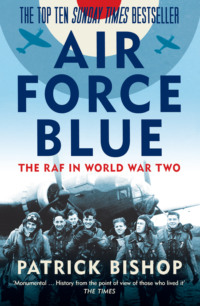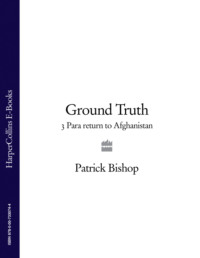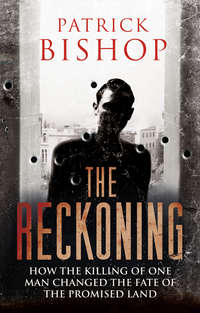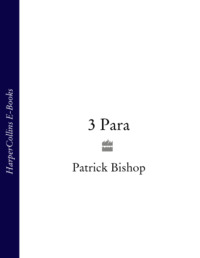
Bomber Boys: Fighting Back 1940–1945
Even with the influx of outsiders, civic pride was strong. ‘People were self-disciplined and proudly self-reliant,’ wrote Dennis Field, a Coventry schoolboy at the time of the raid who went on to join Bomber Command. There was a marked communal loyalty summed up in the signature tune of the city’s favourite entertainer, Sydney James, who appeared every week at the Rialto. As he played the organ, the audience would sing along.
Looking at life and wearing a smile
Helping a lame dog over a stile
Don’t mind the rain
Forget your umbrella
Or lend it, for once, to the other fella
Making the best of all that you find
Leaving your cares and your worries behind
Laughing at your troubles and your trials and your strife
Yes, that is the best way of looking at life …1
An air of complacency seems to have hung over the pleasant streets of Coventry in the early part of the war. Its politics were Labour, a consequence of the strong trade-union movement rooted in the factories. Coventry people made weapons but many were opposed to their use. Pacifism and the disarmament movement were strong. In Coventry, as elsewhere, a strange mood of insouciance, verging on fatalism, was noticeable as the violence grew nearer. When, in the spring of 1939, the authorities offered Anderson bomb shelters at a price of five pounds (free for the lower-paid) there were few takers. Those who accepted had their legs pulled for being ‘windy’.
In June 1940, when the first bombs dropped on Ansty aerodrome just outside the city, they were seen as a novelty. People set out in cars and on bicycles to gawp at the craters. The thrill soon wore off. Between 18 August and the end of October Coventry was attacked seventeen times, killing 176. As the casualty list lengthened, people started leaving the city at night, ‘trekking’ to the safety of the surrounding countryside. The better off went by car, the less affluent by bus. The very poorest piled bedding on to prams and walked out, sleeping under bridges.
By the time of the big raid people had grown accustomed to the howl of the sirens and the nuisance of shifting down to the basement or heading to the nearest public shelter. For the workers of the fire service and Air Raid Precautions, the attacks provided good practice. They had seen mutilated bodies and knew what an air raid felt like.
Despite the acknowledged threat, Coventry’s defences were weak, with only thirty-six anti-aircraft guns protecting the city. There were searchlights and fifty-six reassuring-looking barrage balloons wallowed over the city, but they were not much of a deterrent on the fatal night. RAF night-fighters found tracking intruders in the dark an almost impossible task and their success rate was to remain pitifully low until enough aircraft were fitted with radar.
A shelter-building programme had been accelerated as the raids continued and there was room inside them for most of the population but many of them were damp and cheaply built. The council’s emergency committee kept an informal log of what was being said in bus queues and pubs. The state of the shelters, the feebleness of the anti-aircraft defences and the absence of British fighters were consistent themes of complaint.2
Coventry’s transformation from an obscure Midlands city to an international symbol of civilian suffering and the inhumanity of modern war started at dusk on Thursday 14 November when crews of the Luftwaffe Pathfinder Force Kampfgruppe 100 boarded Heinkel 111s and took off from a base at Vannes, north of Saint-Nazaire. Coventry was one of three targets that night. The others were Wolverhampton and Birmingham.
The moon began to rise over Coventry at 5.18 p.m. Everyone would later recall its extraordinary brightness. It gleamed on the cobbles of the old city and the lead roof of the cathedral. The sight made people nervous. The citizens had come to fear a bomber’s moon. At 7.10 p.m. the sirens sounded. This was early for a raid to be announced and the apprehension deepened. Ten minutes later the Germans were overhead and the bombardment began. It started with small incendiaries. They made a curious swishing noise as they fell. By now people had learned how to deal with them, picking them up with a long-handled shovel and dropping them into a bucket of water or sand.
But they came down in huge numbers and the emergency services and volunteer firewatchers were soon overwhelmed. At 9.31 p.m. the first high explosive (HE) bombs hit the ground. A firewatcher’s log recorded at 9.40 p.m.: ‘Cathedral blazing fiercely. HEs all around the city centre.’ The sirens had sent women and children hurrying out into the blacked-out streets to seek the public shelters, or down into their basements or back-garden Andersons. ‘When the sirens sounded I was doing homework in our front room,’ Dennis Field remembered. ‘The continual drone of engines and falling bombs made it quickly obvious that the raid was unusually heavy and Mum and I soon decided to go to next-door’s shelter where we had an open invitation when things looked sticky. It was cold and we took extra coats … the bombs rained down … many times we crouched down expecting the worst … occasionally there were colossal bangs and blasts which blew open the door. I wanted to go out and see what was happening and to help if I could but demurred to Mum’s pleadings and restricted myself to occasional peers outside. The sky seemed aglow with the brightest huge conflagration lighting the sky in the direction of the city centre.’
After the initial fire-raising attack lit up the city the main force of bombers converged on it in three streams, crossing the English coast at Lincolnshire, Portland and Dungeness. The raid had been planned in considerable detail. Each of the eight bomber units involved had been assigned an objective. Their targets included the Alvis aero-engine factory, the Standard Motor Company, the British Piston Ring Company, the Daimler works and the Hill Street Gasworks. The greatest destruction was done to the Daimler factory to the north of the city centre, which produced among other things rotating gun turrets. The site was struck by up to 150 HE bombs and 3,000 incendiaries. The Alvis factory was bombed flat. Altogether twenty-seven war production factories including twelve engaged in making aeroplanes were hit.
The raid reached a climax around midnight. A survivor remembered ‘a night of unforgettable horror – the scream of falling bombs – the shattering explosions – the showers of incendiaries, literally thousands, and then … perhaps the most horrifying sight of all – the sudden fires leaping up, their flames, fanned by the wind, rapidly spreading and enveloping all within reach.’3 The smell of the burning city reached up to the bombers. A crewman, Hans Fruehauf, who had taken part in the first London raids, looked down on the lake of fire and wondered what he was doing. ‘The usual cheers that greeted a direct hit stuck in our throats. The crew just gazed down at the flames in silence. Was this really a military target, we all asked ourselves?’4 A ‘Front Reporter’ for the German propaganda service was a passenger in one of the aircraft. He had no doubts of the legitimacy of what he witnessed. ‘We could see enormous fires raging, some white and brilliant, others dark red. Then came the high spot of the raid, the dropping of the bombs … a tremor went through the machine as the bombs dropped … our bombs had hit their mark; the fires extended … it is the nerve centre of the British armament industry which had been hit, and I am proud that I witnessed this.’5
The anti-aircraft guns soon ran out of ammunition and there was no sign of RAF night-fighters so the Germans were free to bomb as they pleased, swooping in low to improve accuracy. As mains were shattered and hydrants buried under rubble, the firemen’s hoses ran dry. Crews drafted in from outside watched impotently as Coventry burned. The fire was fiercest in the old city centre. John Sheldon who owned a stables in Little Park Street described the din of ‘falling walls, girders, pillars, machinery crashing four storeys, the droning of the planes as they let go their bombs and the rattling of shrapnel on corrugated sheeting’. It seemed to him that no one caught in the open could possibly have survived.6
The fire created weird effects. In Broadgate, in the heart of the city, the smell of roasting meat from burning butcher shops mingled with the scent of fine Havanas from the tobacconists, Salmon and Gluckstein. Inside the shelters, the air was thick with plaster and brick dust shaken loose by the pounding, and the stench of filth from the primitive or non-existent latrines. The overwhelming feeling was of powerlessness. It was better to be outside doing something. The ARP and Auxiliary Fire Service workers, the ambulancemen, doctors and nurses found they were too busy to be afraid. The urge to not let oneself down, to be seen to be coping and doing one’s best was a strong antidote to fear or at least a help in suppressing it. ‘Everyone was working as a member of a team,’ said a student nurse at Gulson Road Hospital which was inundated with casualties after the Coventry and Warwickshire Hospital suffered heavy damage. ‘Even the consultants who were normally treated like little gods and who to us poor nurses never seemed to be in the best of moods became human.’ During her training she had dreaded having to assist at an amputation and had arranged to be off duty when such operations were scheduled. ‘The blitz on Coventry changed all that for me. I didn’t have time to be squeamish.’7
Despite the ferocity of the attack, rescue workers struggled on. Instead of reducing the value of life, the scale of the slaughter seemed to increase it. Every death averted, every existence saved, was a small victory. The hope of preserving a life drove the rescue teams to extraordinary lengths of selflessness. Les Coleman, an air-raid warden, heard a baby crying from beneath the rubble of a demolished house. He and his mates scrabbled for hours at the pile of bricks, fearful of using picks and shovels in case they hurt the child. Overhead the Luftwaffe were busy and the bombs fell steadily. They only stopped digging when the crying faded to silence.8
The all-clear sounded at 6.16 p.m., eleven hours after the first warning. Few heard it. Most of the electricity cables that powered the sirens were cut. Gradually people crept from the shelters into a drizzly morning and a changed world. The first thing they did was to look for their houses. Dennis Field found his, ‘like most around, with windows out and roof damaged and clearly uninhabitable.’ At least it was still standing. Whole streets had disappeared and landmarks vanished. The town seemed to have dissolved. The survivors walked through mounds of smoking debris flickering with flame, around craters big enough to swallow a bus. The most shocking sight was the cathedral. It lay open to the sky. The roof and the pillars had collapsed and everything inside the nave had burned to ash, piled up within the sagging external walls. All that remained was the spire and tower.
Coventry had been hit by 503 tons of high explosive, 56 tons of incendiaries and 127 parachute mines. The city was like others which had expanded during the Industrial Revolution. The workers’ houses were huddled along the flanks of the factories they worked in. It was inevitable that the German bombs, no matter how well aimed, would hit them. Altogether 42,904 homes were destroyed or damaged, 56 per cent of the housing in the city. The number of dead was put at 554. Another 863 were seriously injured.
This was the most concentrated attack of the Blitz to date. To Britain and its allies it seemed that the Germans had set a new standard in ruthlessness. Those who took part in the raid believed they were engaged in a respectable act of war. At the pre-operation briefing, crews were told by their commander that Coventry was ‘one of the chief armament centres of the enemy air force and has also factories which are important for the production of motor vehicles and armoured cars.’ If the raid succeeded, he said, ‘we shall have dealt another heavy blow to Herr Churchill’s war production.’9
The raid was indeed a great success. Eight hours after it ended, German radio listeners were told that bombers had ‘inflicted an extraordinarily heavy blow on the enemy’ and that Coventry had been ‘completely wiped out’. In the broadcast a notorious word was heard for the first time. What the bombers had done was to koventrieren, to Coventrate, the city.10
Until now civilian spirits had held up well in air attacks. Coventry provided a new and sterner test of morale. The raids on London so far had been heavy but scattered. The attacks on places like Liverpool and Southampton had been limited and of much shorter duration. The violence against Coventry seemed more focused and therefore potentially more traumatic than anyone else had experienced. It was here that the question of whether Britain could take it might be answered.
The first evidence was troubling. As people struggled to recover, a feeling of numb hopelessness appears to have set in. By now there were reporters around to record the city’s mood. Hilde Marchant, a thoughtful and courageous Daily Express correspondent who had witnessed the war in Spain, arrived while fires still burned and buildings toppled. She came across a dazed-looking group standing helplessly in the street, ‘occasionally asking when bread was coming into the city. There was no clamour, just sullen resentment at the inconvenience. They had patience because they were too weary to be angry.’ Outside the Council House, the municipal headquarters, she saw a long queue. ‘Men without collars and still in their carpet slippers. Women in woollen dressing gowns and slippers just as they had come from the shelter … asking for food and money.’
When an aeroplane appeared overhead there was a wild scramble and women hauled their children to the nearest shelter. The aircraft shifted in the sky to reveal RAF roundels, but it was some time before anyone was persuaded to come out. Some people had never left the shelters after the all-clear. Peering into one, Marchant saw two adults and two children ‘with greenish faces, so still that they looked dead’. A team from the pioneering social study group Mass Observation, veterans of bomb attacks on London and elsewhere, arrived in Coventry on Friday afternoon less than a dozen hours after the raid finished. Their report claimed the attack had caused ‘unprecedented dislocation and depression’, compared with what they had seen before. ‘There were more open signs of hysteria, terror, neurosis observed than during the whole of the previous two months together in all areas,’ it said. ‘Women were seen to cry, to scream, to tremble all over, to faint in the street, to attack a fireman and so on. The overwhelmingly dominant feeling on Friday was the feeling of utter helplessness. The tremendous impact of the previous night had left people practically speechless in many cases. And it made them feel impotent. There was no role for the civilian. Ordinary people had no idea what they should do (original emphasis).’11
The lack of organization or direction was unsurprising given the power of the attack. The mayor and his officials, the men who ran the city’s services, had all suffered the same experience as everyone else. An individual report by a Mass Observation representative suggested that Coventry’s relative smallness meant the ‘shock effect of the bombing was much greater than in London … everybody knew somebody who was killed or missing … everybody knew plenty of people who had been rendered temporarily or permanently homeless. And these subjects occupied literally 90 per cent of all conversation heard throughout Friday afternoon and evening. Even in Stepney at the beginning of the Blitz there was not nearly so much obsession with damage and disaster.’
This was to be expected and no indication of despair. But the observer also noted that people seemed anxious to leave Coventry behind, reporting that ‘the dislocation is so total in the town that people easily feel that the town itself is killed (original emphasis).’12
This was the reaction that the authorities had feared, opening the way to anarchy. It was particularly disastrous if it happened in Coventry. If the city descended into chaos and flight, who would man the war factories when they were rebuilt, as they would have to be if the struggle was to continue?
Senior government figures rushed in to test the mood themselves. The Home Secretary Herbert Morrison, the Minister of Health Ernest Brown and the Minister of Aircraft Production Lord Beaverbrook converged on Coventry. The city officials who met them were angry. They demanded to know why there had been no night-fighters to protect them and so few guns. Morrison wrote later that he found ‘an almost total lack of will or desire to get the town moving again’ and detected an ‘air of defeatism’. This was desperately unfair. The men in front of him were still in shock from an experience that was unknown to the men from London. The chief fire officer, who showed up covered in grime from the smoke, fell asleep at the table.
Lord Beaverbrook, the Canadian-born press baron and crony of the prime minister, seemed particularly unsympathetic. Instead of offering any apology for the absence of fighters he made a florid speech, reminding the officials of their duty to get Coventry working again. This was the brutal truth. Coventry was essential to the war effort and the resumption of production was given precedence over easing the plight of survivors. The first major decision was to set up an organization under the chairmanship of a powerful local car manufacturer, William Rootes, to oversee the restoration of gas, water, electricity and transport so that the war factories could function again.
Apprehension rather than defiance was the prevailing sentiment in Coventry’s shattered streets on the morning after the Blitz. There was no reason to doubt that the Germans would be back again that night and no expectation that anyone would be able to stop them. The story went round that they had deliberately left the cathedral spire intact to provide an aiming point for the next bombardment.
As the short day wore on the city emptied. It reminded Hilde Marchant of what she had seen in Spain and Finland. ‘Yet this was worse … these people moved against a background of suburban villas, had English faces … they were our own kind.’ Both sides of the road were filled with ‘lorries, cars, handcarts and perambulators … the lorries were packed with women and children sitting on suitcases or bundles of bedding … the most pathetic of all were those who just leaned against the railings at the roadside, too exhausted to move, their luggage in heaps around them and a fretful tired child crying without temper or anger …’ Those with relations round about were hoping they would have room to take them in. Those without were looking for cheap or free lodging with strangers and often they found it. Church halls and Scout huts opened up to supplement the existing emergency centres. Some gave up looking and slept under hedges or against walls.
But over the following days, people began to drift back. Many spent the day in town then trekked back to the country in the evening. There was no real choice but to return. Coventry was where their lives were. There, they joined a significant number who had stayed put, either because their duties demanded it or out of a refusal to be driven out. The pride involved in having endured quickly asserted itself. Tom Harrisson, one of the founders of Mass Observation, arrived on Friday afternoon and found the city in low spirits. ‘It would be an insult to the people of Coventry to ballyhoo them and exaggerate their spirit,’ he said in a talk broadcast after the BBC Nine O’clock News the following night. The most common remark he had heard from people as they first surveyed the mess of their city was ‘poor old Coventry’. But by Saturday, he found the mood had changed. ‘I was out in the streets again before daylight. It was a mild clear morning and the first thing I heard was a man whistling. Soon people began crowding through the town but today they were talking, even joking about it. Instead of the despair I heard them say “we’ll recover – life will go on, we can get used to it.” People still felt pretty helpless but no longer hopeless. The frightened and nervous ones had already left. Those left behind were beginning to feel tough – just as the people of London had felt tough before them.’
A week later a visitor noticed a card in the window of a half-wrecked baby-clothes shop.13
BUSINESS AS USUAL
KEEP SMILING
There will always be an ENGLAND
It was the spirit of Sydney James, the Rialto troubadour.
The story of what had happened in Coventry was played down in the BBC’s first big news broadcast of the day at 8 a.m. By 1 p.m. it was being given unusually full treatment. For the first time, the Ministry of Information allowed a blitzed city other than London to be mentioned by name. This was gratifying for those who endured the raid but the official version of what had happened differed sharply from what they had experienced. According to the BBC ‘the enemy was heavily engaged by intensive anti-aircraft, which kept them at a great height and hindered accurate bombing of industrial targets.’ It did admit heavy casualties – a figure of a thousand was given – and that many buildings had been destroyed and damaged. The attack, it emphasized, was an ‘indiscriminate bombardment of the whole city’. This account was repeated in the following day’s newspapers. T. S. Steele of the Daily Telegraph described the operation as a ‘terror raid’. He accused the Germans of seeking ‘to reproduce the Spanish tragedy of Guernica on a larger scale’, a reference to the Condor Legion’s destruction of the Basque capital in 1937.
Steele repeated the line that a fierce anti-aircraft barrage had kept the raiders five miles above the city. ‘There was not even a pretence at an attempt to select military targets,’ he wrote. ‘For ten hours raider after raider flew over at an immense height and dumped bombs haphazard (sic) at the rate of nearly one a minute on the town. The result is that factories which are legitimate military targets have escaped comparatively lightly. The brunt of the destruction has fallen on shopping centres and residential areas – hotels, offices, banks, churches and – no Nazi raid is complete without this – hospitals.’
Much of the information contained in the reports came from a Ministry of Home Security communiqué. Faced with the magnitude of the raid, the government had chosen to play the story up. The wisdom of publicizing the attack was questioned at the War Cabinet meeting on Monday 19 November. The Secretary of State for War, Anthony Eden, had listened to Harrisson’s Saturday night talk on the BBC and felt it had ‘been a most depressing broadcast’. The prime minister disagreed. The effect of the publicity had been considerable in the United States and in Germany he said.
American correspondents indeed covered the raid in detail and seized on the city’s ordeal as a symbol of British steadfastness and Nazi barbarity. The Germans responded by claiming that 223 had been killed by the RAF during a raid on Hamburg carried out the night after the Coventry attack (the true number was in fact twenty-six who died when bombs hit the Blohm and Voss shipyard). The assumption was that transatlantic indignation at what had been done to Coventry had stung Germany into insisting that its civilians were also suffering. To one watching American, it seemed clear what was coming next. Raymond Daniell of the New York Times told his readers that people in Britain now found it difficult to escape a feeling that a ‘war of extermination is beginning. Each bomb that falls intensifies hatred and stimulates the demand for retaliation in kind.’
The note of the all-clear siren had barely faded before calls for retribution began. When King George visited the city less than two days afterwards a man in the crowd called out to him: ‘God bless you. Give them what they gave to us! We can take it.’14 The intelligence reports reaching the city’s emergency services during the raids that preceded the big attack suggested that people had thought bombing attacks would be worse than they in fact were. As a result, ‘more people than hitherto now feel that indiscriminate bombing of Berlin would be an unwise policy.’15









